|
If you have vegetables that are blooming but not setting fruit, you may have a problem with flower pollination. There are several possible reasons for this that usually vary by species. One condition that can affect several species at the same time is overfertilization. Too much nitrogen causes the plant to emphasize vegetative growth, often to the detriment of fruit production. Overfertilization can lead to a delay in flower production and a decrease in fruit set among the flowers produced.
Squash, cucumbers, watermelon, and muskmelon can have a couple of other problems. First, the early flowers on these plants are usually all male. The production of both male and female flowers becomes more balanced as time passes. You can easily tell the difference between the two because only the female flower has a tiny fruit behind the blossom. If you have both, have not over-fertilized, and still have a problem, make sure you have pollinators. Look for the presence of bees visiting the plants. If you don't see any, try hand-pollinating several flowers. Use a painter’s brush to transfer pollen from the anther of the male flower to the stigma of the female flower. If you get fruit on only those flowers you pollinated, you need more pollinators. Make sure you aren't killing them with overuse of insecticides. If you must use an insecticide, spray near dusk when the flowers have closed. Tomatoes are wind pollinated and therefore not dependent on pollinators. But they have another possible problem which is temperature. Tomatoes normally won't set if the night temperature is below 50 due to sparse pollen production. They also won't set when nighttime temperatures are above 75 degrees F and daytime temperatures are above 95 degrees F with dry, hot winds. Under such conditions, fertilization is not completed and no fruit develops. (Ward Upham) Video of the Week: |
| July 30 K-State Research & Extension Center Horticulture Field Day, Olathe http://www.johnson.k-state.edu/lawn-garden/horticulture-field-day. html |
| August 4 Kansas Turfgrass Field Day, Manhattan https://turffieldday.eventbrite.com The field day program is designed for all segments of the turf industry - lawn care, athletic fields, golf courses, and grounds maintenance. Included on the program are research presentations, problem diagnosis, commercial exhibitors, and equipment displays. There will be time to see current research, talk to the experts and get answers to your questions. Pesticide recertification credit in 3B is available, as well as GCSAA education points |
| August 15 K-State Vegetable Research Field Day, Olathe http://hnr.k-state.edu/events/2016%20GG%20Vegetable%20Research%20Tour.pdf |
Vegetables:
Tomatoes Slow to Ripen?
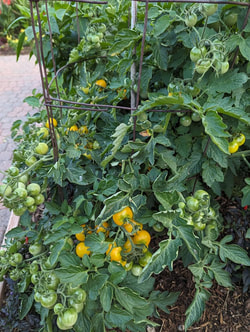
Tomato color can also be affected by heat. When temperatures rise above 95 degrees F, red pigments don't form properly though the orange and yellow pigments do. This results in orange fruit. This doesn't affect the edibility of the tomato, but often gardeners want that deep red color back.
So, can we do anything to help our tomatoes ripen and have good color during extreme heat? Sure, there is. We can pick tomatoes in the “breaker” stage. Breaker stage tomatoes are those that have started to turn color. At this point, the tomato has cut itself off from the vine and nothing will be gained by keeping it on the plant. If tomatoes are picked at this stage and brought into an air-conditioned house, they will ripen more quickly and develop a good, red color. A temperature of 75 to 85 degrees F will work well. (Ward Upham)
Bitter Cucumber
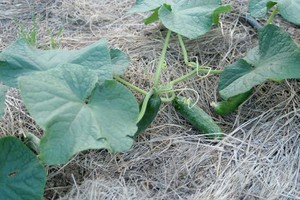
Two compounds, cucurbitacins B and C, give rise to the bitter taste. Though often only the stem end is affected, at times the entire fruit is bitter. Also, most of the bitter taste is found in and just under the skin. Removing the stem end and the skin can often help salvage bitter fruit.
Bitter fruit is not the result of cucumbers cross-pollinating with squash or melons. These plants cannot cross-pollinate with one another.
Often newer varieties are less likely to become bitter than older ones. Proper cultural care is also often helpful. Make sure plants have the following:
– Well-drained soil with a pH between 6.0 and 6.5. Plenty of organic matter also helps.
– Mulch. Mulch helps conserve moisture and keeps roots cool during hot, dry weather.
– Adequate water especially during the fruiting season.
– Disease and insect control. (Ward Upham)
How to Pick a Ripe Melon
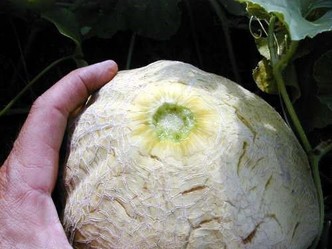
When choosing a melon from those that have already been harvested, look for a clean, dish-shaped scar. Also, ripe melons have a pleasant, musky aroma if the melons are at room temperature (not refrigerated). Watermelons can be more difficult and growers often use several techniques to tell when to harvest.
1. Look for the tendril that attaches at the same point as the melon to dry and turn brown. On some varieties this will need to be completely dried before the watermelon is ripe. On others it will only need to be in the process of turning brown.
2. The surface of a ripening melon develops a surface roughness (sometimes called “sugar bumps”) near the base of the fruit.
3. Ripe watermelons normally develop a yellow color on the “ground spot” when ripe. This is the area of the melon that contacts the ground.
Honeydew melons are the most difficult to tell when they are ripe because they do not “slip” like muskmelons. Actually, there is one variety that does slip called Earlidew, but it is the exception to the rule. Ripe honeydew melons become soft on the flower end of the fruit. The “flower end” is the end opposite where the stem attaches. Also, honeydews should change to a light or yellowish color when ripe, but this varies with variety. (Ward Upham)
Fruit:
Watering Fruit Plants in Hot Summers
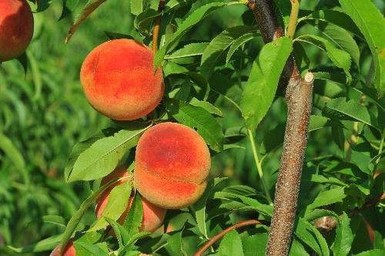
The stress may also reduce the development of fruit buds for next year's fruit crop. If you have fruit plants such as trees, vines, canes, and such, check soil moisture at the roots. Insert a spade or shovel or a pointed metal or wood probe -- a long screwdriver works well for this. Shove these into the soil about 8 to 12 inches. If the soil is hard, dry, and difficult to penetrate, the moisture level is very low, and plants should be irrigated to prevent drooping and promote fruit enlargement. Water can be added to the soil using sprinklers, soaker hose, drip irrigation, or even a small trickle of water running from the hose for a few hours. The amount of time you irrigate should depend upon the size of plants and the volume of water you are applying. Add enough moisture so you can easily penetrate the soil in the root area of the plant with a metal rod, wooden dowel or other probe to a depth of 12 inches. When hot, dry weather continues, continue to check soil moisture at least once a week.
Strawberries have a shallow root system and may need to be watered more often – maybe twice a week during extreme weather. Also, newly planted fruit trees sited on sandy soils may also need water twice a week. (Ward Upham)
Pests:
Cicada Killer Wasps
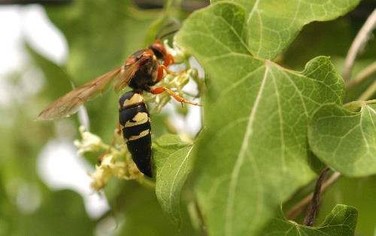
Although these wasps are huge, they usually ignore people. Males may act aggressively if they are threatened, but are unable to sting. Females can sting, but are so passive that they rarely do. Even if they do sting, the pain is less than
that of smaller wasps such as the yellow jacket or paper wasp and is similar to the sting of a sweat bee.
The cicada killer is a solitary wasp rather than a social wasp like the yellow jacket. The female nests in burrows in the ground. These burrows are quarter-size in diameter and can go 6 inches straight down and another 6 inches horizontally. Adults normally live 60 to 75 days from mid-July to mid-September and feed on flower nectar and sap. The adult female seeks cicadas on the trunks and lower limbs of trees. She stings her prey, flips it over, straddles it and carries it to her burrow. If she has a tree to climb, she will climb the tree so she can get airborne and fly with cicada back to the nest. If not, she will drag it. She will lay one egg per cicada if the egg is left unfertilized. Unfertilized eggs develop into males only. Fertilized eggs develop into females and are given at least two cicadas. Cicadas are then stuffed into the female’s burrow. Each burrow normally has three to four cells with one to two cicadas in each. However, it is possible for one burrow to have 10 to 20 cells.
Eggs hatch in two to three days, and larvae begin feeding on paralyzed cicadas. Feeding continues for four to 10 days until only the outer shell of the cicada remains. The larva overwinters inside a silken case. Pupation occurs in the spring. There is one generation per year. Cicada killers are not dangerous, but they can be a nuisance. If you believe control is necessary, treat the burrows after dark to ensure the female wasps are in their nests. The males normally roost on plants near burrow sites. They can be captured with an insect net or knocked out of the air with a tennis racket during the day. Carbaryl (Sevin) or permethrin may be used for control. (Ward Upham)
Fall Webworm
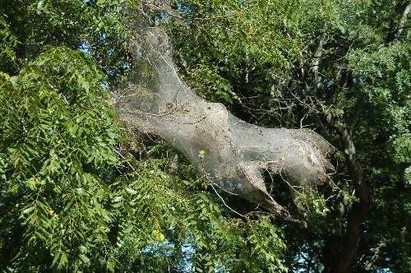
Mature caterpillars are yellowish with black and brown markings, and have many tufts of long hair. As larvae mature, they crawl down the tree and spend the winter as pupa in the leaf litter under the tree.
High populations of fall webworm can completely defoliate host plants but do not kill them. However, on pecan trees, nut production and quality can be reduced if webworms are not controlled. On ornamental plants, control is optional.
Pruning and destroying the infested portions of branches is a common control practice while webs are still small. Also, a stick or pole with a nail inserted crosswise can be used to snag individual webs. Twisting the pole after insertion will cause the web to wrap around the pole where it can be removed and destroyed. Instead of a nail inserted crosswise, some people use a toilet brush attached to the end of a pole. Insecticides can also be used for control but a commercial quality, high-pressure sprayer is needed to penetrate the webs. Numerous products can be used for control including spinosad (Conserve; Fertilome Borer, Bagworm, Leafminer and Tent Caterpillar Spray; Captain Jack’s Dead Bug Brew),
cyfluthrin (Tempo, Bayer Vegetable & Garden Insect Spray) and permethrin (numerous trade names). We normally consider fall webworm damage to be purely aesthetic, and control is not needed to protect the health of the tree. (Ward Upham)
Contributors: Ward Upham, Extension Associate
Video of the Week:
When is Watermelon Ripe on the Vine?
Upcoming Events:
August 20, 2015
Depot Market
1101 30 Road, Courtland, KS
5:00 pm - 8:00 pm
For more information, go to: http://www.hfrr.ksu.edu/doc4356.ashx
Development of No-Till Pumpkins for the Great Plains
September 1, 2015
Schwinn Produce Farm
17624 Santa Fe Trail, Leavenworth, KS
5:00 pm - 8:00 pm
For more information, go to: http://www.hfrr.ksu.edu/doc4357.ashx
Turfgrass:
For Seeding Success, Pay Attention to "Other Crop" on the Seed Label
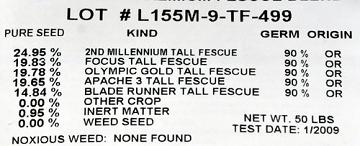
Orchardgrass is a problem because it is faster growing and lighter green than our turfgrasses. It is a bunch grass and so doesn’t spread, but infested areas are still unsightly due to small tufts of this species pockmarking the lawn.
Rough bluegrass is fine-textured and forms circular patches in the lawn. It blends in fairly well until summertime heat causes it to turn brown rapidly. If the rough bluegrass would just die in the heat, it would only be a temporary problem. Unfortunately, it usually just goes dormant, turning green again with cooler temperatures and rain.
Buying quality seed starts with knowing how to decipher the seed label. One of the most important things to look for is listed as "% other crop.” "Other crop" refers to any species that is intentionally grown for some purpose. That would include turfgrasses (those species other than the one you are buying) and pasture grasses. Orchardgrass and rough bluegrass both are listed as “other crop” seed. Seed labels are required by law to show the percentage (by weight) of "other crop" in the bag, but unless a species constitutes 5% or more, the label doesn't have to list each species by name.
How much "other crop" is too much? That’s a difficult question to answer, but the tolerance is very low. It depends on what the "other crop" actually is, and the quality expectations of the buyer. In practice, "other crop" may refer to something relatively harmless, like a small amount of perennial ryegrass in a bag of tall fescue, or it may refer to something bad, like rough bluegrass or orchardgrass. The homeowner really has no easy way of knowing what the "other crop" is, although there are some hints. If it is something bad, less than ½ of 1% can ruin a bag of seed. Obviously, if your expectations are high for the area you are planting, you would want the "other crop" to be as close to zero as possible. Good quality seed will often have 0.01% “other crop” or less. (Ward Upham)
Recommended Tall Fescue Cultivars
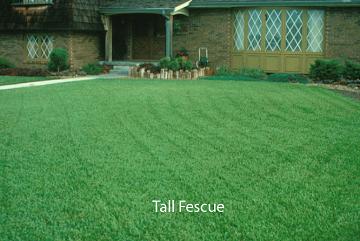
Each year the National Turfgrass Evaluation Trial rates tall fescue varieties for color, greenup, quality and texture. Quality ratings are taken once a month from March through October. K-31 consistently rates at the bottom. The highest rated cultivars were 3rd Millennium, Braveheart, Bullseye, Catalyst, Cochise, Corona, Escalade, Faith, Falcon V, Firecracker, Firenza, Jamboree, LS 1200, Monet, Mustang, Raptor II, Rhambler SRP, RK5, Shenandoah III, Shenandoah Elite, Sidewinder, Spyder LS, Talladega, Turbo and Wolfpack II.
There are a number of other cultivars that did not make this list but should do well in Kansas. Go to http://ntep.org/data/tf06/tf06_12-10f/tf0612ft04.txt . Any variety with a mean rating of 6.0 or above should be fine. K-31 has a rating of 4.1. Keep in mind that mixes of several varieties may allow you to take advantage of differing strengths. It is not necessary for mixes to contain only the varieties mentioned above.
Though K-31 may still be a good choice for large, open areas, the new cultivars will give better performance for those who desire a high-quality turf. (Ward Upham)
Kentucky Bluegrass Variety Selection for Cool-Season Lawns
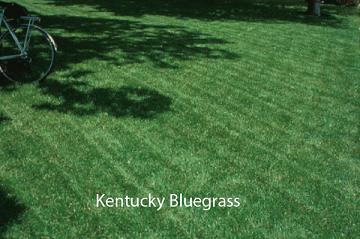
Recommended cultivars for high-quality lawns, where visual appearance is the prime concern, include Alexa II, Aura, Award, Bewitched, Barrister, Belissimo, Beyond, Diva, Everest, Everglade, Excursion, Ginney II, Granite, Impact, Midnight, NuChicago, NuGlade, NuDestiny, Rhapsody, Rhythm, Rugby, Skye, Solar Eclipse, STR 2485, Sudden Impact, Washington and Zifandel. Such lawns should receive 4 to 5 pounds nitrogen per 1,000 square feet per year and would typically be irrigated during dry periods to prevent drought stress.
Cultivars that do relatively well under a low-maintenance program with limited watering often differ from those that do well under higher inputs. Good choices for low maintenance include Baron, Baronie, Caliber, Canterbury, Dragon, Eagleton, Envicta, Kenblue, North Star, and South Dakota. Instead of the 4 to 5 pounds of nitrogen per 1,000 square feet per year, low-maintenance program would include 1 to 2 pounds of nitrogen per 1,000 square feet per year. Obviously, a low-input lawn will not be as attractive as a higher-input lawn, but you can expect the cultivars listed above to look fairly good in the spring and fall, while going dormant in the summer. (Ward Upham)
Fruit:
Fertilize Strawberries
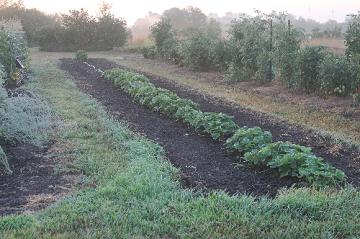
Nitrogen, applied mid August, will help promote fruit bud development. A general application rate is ½ to 3/4 pound of actual nitrogen per 100 feet of row. The nitrogen may be in the form of a fertilizer mixture such as ammonium phosphate or 12-12-12, or in a fertilizer containing only nitrogen such as urea or ammonium nitrate. Some specific examples would include:
Iron + (11-0-0) at 6 pounds per 100 feet of row.
12-12-12 at 5.5 pounds per 100 feet of row.
Nitrate of Soda (16-0-0) at 4 pounds per 100 feet of row
Ammonium sulfate (21-0-0) at 3 pounds per 100 feet of row
Urea (46-0-0) at 1.5 pounds per 100 feet of row
On sandy soils, the rate may be increased by about a half. After spreading the fertilizer, sprinkle the area applying at least a half-inch of water to move the nitrogen into the strawberry root areas. (Ward Upham)
Miscellaneous:
Field Dodder
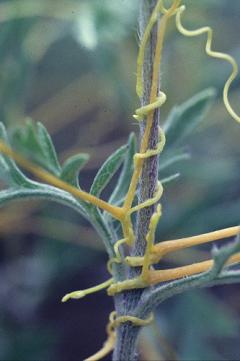
Because dodder is an annual, it must reproduce from seed. Plants present now will be killed by the first frost this fall. Seed may sprout in the spring or lie dormant for a number of years. Germination takes place in the soil, but roots die as soon as theplant finds an acceptable host. After attachment, dodder lives completely off the host plant. A single dodder plant can spread by branching and attacking additional host plants.
Destroying the host plants can control dodder, but this may not be an acceptable solution for many people. Dodder cannot be destroyed by pulling it off the host plants because remaining stem pieces will continue to grow. Trifluralin (Preen, Miracle-Gro Garden Weed Preventer, Treflan, Hi-Yield Herbicide Granules Weed and Grass Stopper) is a preemergence herbicide that can be used for control if applied before the dodder seed germinates. Also, glyphosate (Round-up, Kleen-up, Killzall, etc.) is effective on dodder. However, glyphosate is nonselective and will kill whatever it hits, including the host plants. (Ward Upham)
Pests:
Green June Beetle
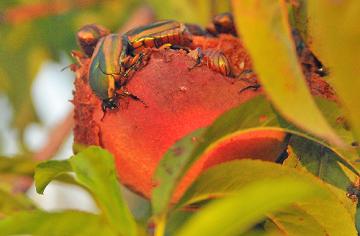
A number of general-use insecticides, including Sevin and malathion, may be used to discourage feeding. Sevin has a two-day waiting period between spraying and harvest on sweet corn and a three-day waiting period on peaches. There is a seven-day waiting period for Sevin on blackberries, so malathion, with a one-day waiting period, may be a better choice. (Ward Upham)
Tomatoes and Stinkbugs
Contributors: Ward Upham, Extension Associate
Video of the Week:
When to Harvest Eggplants
Upcoming Events:
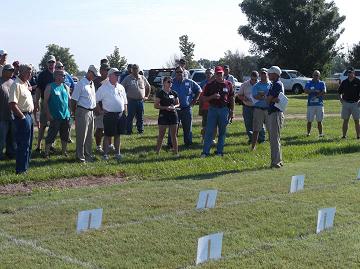
Thursday, August 6, 2015
K-State Research & Extension Center, Olathe
The field day program is designed for all segments of the turf industry - lawn care, athletic fields, golf courses, and grounds maintenance. Included on the program are research presentations, problem diagnosis, commercial exhibitors, and equipment displays. There will be time to see current research, talk to the experts and get answers to your questions.
Pesticide recertification credits in 3A and 3B are available, as well as GCSAA education points.
For more information and to register, go to: https://www.eventbrite.com/e/kansas-turf-ornamentals-field-day-tickets-16109376579
Vegetables:
Common Smut on Sweet Corn
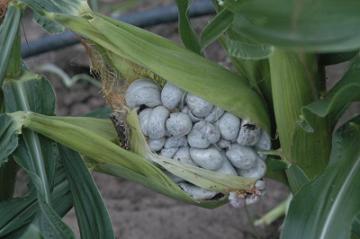
Immature smut galls are considered an edible delicacy known as cuitlacoche in Mexico. They are a high value crop for some growers in the northeast U.S. who sell them to Mexican restaurants. There is no chemical control for this disease. Crop rotation and a balanced fertilizer program can help minimize this disease. Remove and destroy galls from infected plants before they rupture. (Ward Upham)
Blossom-End Rot
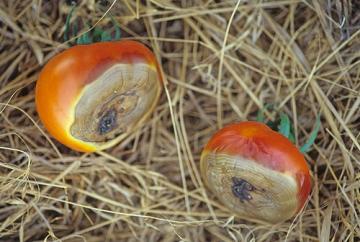
- This year, inconsistent amounts of water may be a factor. This can be due to watering practices or may be due to heavy rains followed by dry periods. Try to keep soil moist but not waterlogged. Mulching can help by moderating moisture levels over time.
- Vegetable tops will sometimes outgrow the root system during cooler spring weather. This is especially true of tomatoes. As long as it is cool, the root system can keep up. When it turns hot and dry, the plant has a problem, and water —with the calcium it carries — goes to the leaves and the fruit is bypassed. The plant responds with new root growth and the condition corrects itself after a couple of weeks.
- Heavy fertilization, especially with ammonium forms of nitrogen, can encourage this condition. Heavy fertilization encourages more top than root growth and the ammonium form of nitrogen competes with calcium for uptake.
- Anything that disturbs roots such as hoeing too deeply can encourage blossom-end rot. Mulching helps because it keeps the soil surface cooler and therefore a better environment for root growth.
There are some years you do everything right and the condition still shows up due to the weather. In such cases, remember that blossom-end rot is a temporary condition, and plants should come out of it in a couple of weeks. You may want to pick off affected fruit to encourage new fruit formation.
Soils with adequate calcium will not benefit from adding additional calcium. If your soil is deficient in this nutrient, add 1 pound gypsum per 100 square feet. Gypsum is calcium sulfate and will not affect pH. Though calcium raises pH, sulfate lowers it and the two cancel each other out. Even if not needed, gypsum will not hurt anything.
We have also found that spraying plants with calcium doesn't work. The fruit's waxy surface doesn't allow absorption of the material and calcium does not move from the leaves to the fruit. (Ward Upham)
How to Pick a Ripe Melon
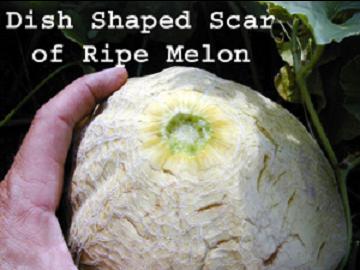
Let’s start with the easy one. Muskmelons are one of those crops that tell you when they are ready to be picked. This can help you not only harvest melons at the correct time but also choose good melons when shopping.
As a melon ripens, a layer of cells around the stem softens so the melon detaches easily from the vine. This is called “slipping” and will leave a dish-shaped scar at the point of stem attachment. When harvesting melons, put a little pressure where the vine attaches to the fruit. If ripe, it will release or “slip.”
When choosing a melon from those that have already been harvested, look for a clean, dish-shaped scar. Also, ripe melons have a pleasant, musky aroma if the melons are at room temperature (not refrigerated).
Watermelons can be more difficult and growers often use several techniques to tell when to harvest.
1. Look for the tendril that attaches at the same point as the melon to dry and turn brown. On some varieties this will need to be completely dried before the watermelon is ripe. On others it will only need to be in the process of turning brown.
2. The surface of a ripening melon develops a surface roughness (sometimes called “sugar bumps”) near the base of the fruit.
3. Ripe watermelons normally develop a yellow color on the “ground spot” when ripe. This is the area of the melon that contacts the ground.
Honeydew melons are the most difficult to tell when they are ripe because they do not “slip” like muskmelons. Actually, there is one variety that does slip called Earlidew, but it is the exception to the rule. Ripe honeydew melons become soft on the flower end of the fruit. The “flower end” is the end opposite where the stem attaches. Also, honeydews should change to a light or yellowish color when ripe, but this varies with variety. (Ward Upham)
Flowers:
Peony "Measles"
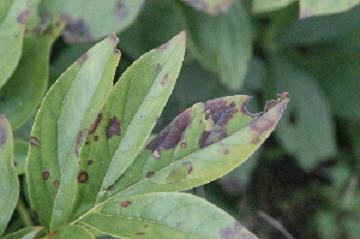
Sanitation is the best control for this disease. Remove all diseased tissue, including stems, at the end of the growing season. Mulch that contains plant debris should also be discarded and then replaced with fresh mulch. Reducing the source of the inoculum will reduce the chances of another severe outbreak next year. (Ward Upham)
Pests:
Grasshoppers
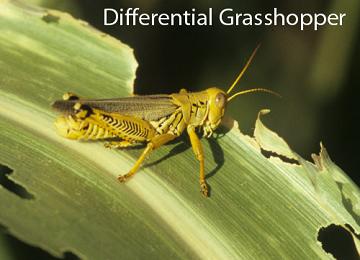
We often have gardeners who are interested in organic controls. Nosema locustae, a protozoan, is the active ingredient in a number of products including Semaspore, NOLO Bait, HopperStopper and Grasshopper Attack. These products are selective and will affect only grasshoppers. This is a trait many gardeners find attractive. However, Nosema locustae products may not be as effective in garden situations as they would be under large-scale rangeland conditions due to potential reinfestations from outside the treated area. Also, these products have other potential disadvantages:- They are most effective against nymphal rather than adult grasshoppers. Also some grasshopper species are less susceptible than others.
- Kill can take 3 to 6 weeks after ingestion.
- These baits are perishable and should be kept refrigerated until use. Pay attention to the expiration date.
As mentioned above, reinfestations of uninfected grasshoppers can occur. These products are not effective against adults. Try to treat the nesting area when hoppers are small and populations are concentrated. Nosema locustae products are allowed in certified organic crop production. Poultry including turkeys, guinea hens and chickens have also been used to help control grasshoppers.
Regardless of method used, the trick is to treat early before the population has matured. Young nymphal stages are much easier to control than adults and are also much less mobile. (Ward Upham)
Ornamentals:
Twig Dieback on Oak

Botryosphaeria canker differs from oak wilt in that only the tips of branches are affected. Oak wilt affects whole branches. This disease causes such minor damage that chemical control measures are unwarranted. Dead twigs on small trees may be pruned off if desired. (Ward Upham)
Contributors: Ward Upham, Extension Associate
Video of the Week:
When is Watermelon Ripe on the Vine?
Turfgrass:
Recommended Tall Fescue Cultivars
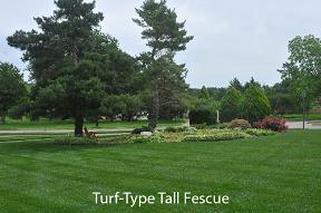
Each year we the National Turfgrass Evaluation Trial rates tall fescue varieties for color, greenup, quality and texture. Quality ratings are taken once a month from March through October. K-31 consistently rates at the bottom. The recommended cultivars were 3rd Millennium, Braveheart, Bullseye, Catalyst, Cochise, Corona, Escalade, Faith, Falcon V, Firecracker, Firenza, Jamboree, LS 1200, Monet, Mustang, Raptor II, Rhambler SRP, RK5, Shenandoah III, Shenandoah Elite, Sidewinder, Spyder LS, Talladega, Turbo and Wolfpack II. There are a number of other cultivars that did not make this list but should do well in Kansas. Go to http://ntep.org/data/tf06/tf06_12-10f/tf0612ft04.txt . Any variety with a mean rating of 6.0 or above should be fine. K-31 has a rating of 4.1. Keep in mind that mixes of several varieties may allow you to take advantage of differing strengths. It is not necessary for mixes to contain only the varieties mentioned above.
Though K-31may still be a good choice for large, open areas, the new cultivars will give better performance for those who desire a high-quality turf. (Ward Upham)
Kentucky Bluegrass Variety Selection for Cool-Season Lawns
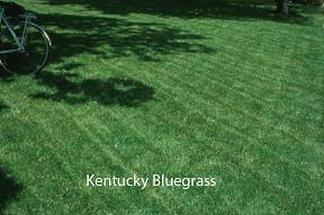
The following cultivars have performed well compared to other bluegrasses in this region. Use this list as a guide. Omission does not necessarily mean that a cultivar will not perform well. Recommended cultivars for high-quality lawns, where visual appearance is the prime concern, include Alexa II, Aura, Award, Bewitched, Barrister, Belissimo, Beyond, Diva, Everest, Everglade, Excursion, Ginney II, Granite, Impact, Midnight, NuChicago, NuGlade, NuDestiny, Rhapsody, Rhythm, Rugby, Skye, Solar Eclipse, STR 2485, Sudden Impact, Washington and Zifandel. Such lawns should receive 4 to 5 pounds nitrogen per 1,000 square feet per year and would typically be irrigated during dry periods to prevent drought stress.
Cultivars that do relatively well under a low-maintenance program with limited watering often differ from those that do well under higher inputs. Good choices for low maintenance include Baron, Baronie, Caliber, Canterbury, Dragon, Eagleton, Envicta, Kenblue, North Star, and South Dakota. Instead of the 4 to 5 pounds of nitrogen per 1,000 square feet per year, low-maintenance program would include 1 to 2 pounds of nitrogen per 1,000 square feet per year. Obviously, a low-input lawn will not be as attractive as a higher-input lawn, but you can expect the cultivars listed above to look fairly good in the spring and fall, while going dormant in the summer. (Ward Upham)
For Seeding Success, Pay Attention to "Other Crop" on the Seed Label
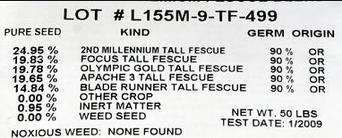
It blends in fairly well until summertime heat causes it to turn brown rapidly. If the rough bluegrass would just die in the heat, it would only be a temporary problem. Unfortunately, it usually just goes dormant, turning green again with cooler temperatures and rain.
Buying quality seed starts with knowing how to decipher the seed label. One of the most important things to look for is listed as "% other crop.” "Other crop" refers to any species that is intentionally grown for some purpose. That would include turfgrasses (those species other than the one you are buying) and pasture grasses. Orchardgrass and rough bluegrass both are listed as “other crop” seed.
Seed labels are required by law to show the percentage (by weight) of "other crop" in the bag, but unless a species constitutes 5% or more, the label doesn't have to list each species by name.
How much "other crop" is too much? That’s a difficult question to answer, but the tolerance is very low. It depends on what the "other crop" actually is, and the quality expectations of the buyer. In practice, "other crop" may refer to something relatively harmless, like a small amount of perennial ryegrass in a bag of tall fescue, or it may refer to something bad, like rough bluegrass or orchardgrass. The homeowner really has no easy way of knowing what the "other crop" is, although there are some hints. If it is something bad, less than ½ of 1% can ruin a bag of seed. Obviously, if your expectations are high for the area you are planting, you would want the "other crop" to be as close to zero as possible. Good quality seed will often have 0.01% “other crop” or less. (Ward Upham)
Fruit:
Fertilize Strawberries
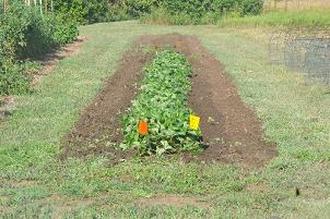
Nitrogen, applied mid August, will help promote fruit bud development. A general application rate is ½ to 3/4 pound of actual nitrogen per 100 feet of row. The nitrogen may be in the form of a fertilizer mixture such as ammonium phosphate or 12-12-12, or in a fertilizer containing only nitrogen such as urea or ammonium nitrate. Some specific examples would include:
Iron + (11-0-0) at 6 pounds per 100 feet of row.
12-12-12 at 5.5 pounds per 100 feet of row.
Nitrate of Soda (16-0-0) at 4 pounds per 100 feet of row
Ammonium sulfate (21-0-0) at 3 pounds per 100 feet of row
Urea (46-0-0) at 1.5 pounds per 100 feet of row
On sandy soils, the rate may be increased by about a half. After spreading the fertilizer, sprinkle the area applying at least a half-inch of water to move the nitrogen into the strawberry root areas. (Ward Upham)
Pests:
What's the Buzz? Green June Beetles!
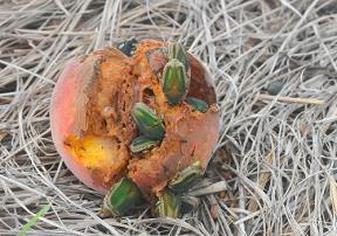
Green June beetles sometimes are victims of mistaken identity ----that of being Japanese beetles. Size-wise, green June beetles are “Goliaths” compared to Japanese beetle “Davids.” There are distinct differences in color/color patterns as well as the presence or absence of white setal tufts. Lastly, green June beetles do not damage flowers or foliage as do Japanese beetles.
Probably the only legitimate complaint against green June beetles is that they may cluster on ripened (especially overly-ripe) fruit, notably peaches and grapes. Timely picking/harvesting of those commodities will help to avoid this situation. (Bob Bauernfeind)
Miscellaneous:
Field Dodder
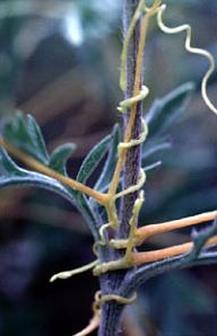
Because dodder is an annual, it must reproduce from seed. Plants present now will be killed by the first frost this fall. Seed may sprout in the spring or lie dormant for a number of years. Germination takes place in the soil, but roots die as soon as the plant finds an acceptable host. After attachment, dodder lives completely off the host plant. A single dodder plant can spread by branching and attacking additional host plants.
Destroying the host plants can control dodder, but this may not be an acceptable solution for many people. Dodder cannot be destroyed by pulling it off the host plants because remaining stem pieces will continue to grow. Trifluralin (Preen, Miracle-Gro Garden Weed Preventer, Treflan, Hi-Yield Herbicide Granules Weed and Grass Stopper) is a preemergence herbicide that can be used for control if applied before the dodder seed germinates. Also, glyphosate (Round-up, Kleen-up, Killzall, etc.) is effective on dodder. However, glyphosate is nonselective and will kill whatever it hits, including the host plants. (Ward Upham)
Contributors: Bob Bauerenfeind, Entomologist; Ward Upham, Extension Associate
Authors
Cynthia Domenghini runs the Horticulture Response Center in the Department of Horticulture and Natural Resources at Kansas State University. Other contributors include K-State Extension Specialists.
Archives
March 2024
February 2024
January 2024
December 2023
November 2023
October 2023
September 2023
August 2023
July 2023
June 2023
May 2023
April 2023
March 2023
February 2023
January 2023
December 2022
November 2022
October 2022
September 2022
August 2022
July 2022
June 2022
May 2022
April 2022
March 2022
February 2022
January 2022
December 2021
November 2021
October 2021
September 2021
August 2021
July 2021
June 2021
May 2021
April 2021
March 2021
February 2021
January 2021
December 2020
November 2020
October 2020
September 2020
August 2020
July 2020
June 2020
May 2020
April 2020
March 2020
February 2020
January 2020
December 2019
November 2019
October 2019
September 2019
August 2019
July 2019
June 2019
May 2019
April 2019
March 2019
February 2019
January 2019
December 2018
November 2018
October 2018
September 2018
August 2018
July 2018
June 2018
May 2018
April 2018
March 2018
February 2018
January 2018
December 2017
November 2017
October 2017
September 2017
August 2017
July 2017
June 2017
May 2017
April 2017
March 2017
February 2017
January 2017
December 2016
November 2016
October 2016
September 2016
August 2016
July 2016
June 2016
May 2016
April 2016
March 2016
February 2016
January 2016
December 2015
November 2015
October 2015
September 2015
August 2015
July 2015
June 2015
May 2015
April 2015
March 2015
February 2015
January 2015
December 2014
November 2014
October 2014
September 2014
August 2014
July 2014
June 2014
Categories
All
All America Selections
All-America Selections
Amaryllis
Anthracnose
Ants
Aphids
Apples
Apricots
Army-cutworm-moths
Ash-borer
Ashes-in-the-garden
Asparagus
Bacterial-wilt
Bagworms
Bark-shedding
Beans
Bermudagrass
Bird-feeding
Bitter-cucumber
Blackberries
Blackspot
Black-walnuts
Blister Beetles
Blossom End Rot
Blossom-End Rot
Blueberries
Botryosphaeria
Breaking-dormancy-early
Breaking-dormancy-early
Bristly Rose Slug
Broccoli
Brownheaded-ash-sawfly
Brown-patch-on-fescue
Brown-rot-of-fruit
Budworms
Buffalograss
Bulbs
Bulb Storage
Butterflies
Butterfly Gardening
Cabbage
Cabbage Worms
Caddo Sugar Maples
Calcareous
Cantaloupe
Carpenter Bees
Cauliflower
Cedar Apple Rust
Cherry Leaf Spot
Chickweed
Chiggers
Christmas Cacti
Christmas Trees
Cicada
Cicada Killer Wasps
Codling Moth Control
Cold Frames
Cole Crops
Colorado Potato Beetle
Columnar Trees
Compost
Conservation Trees
Container Gardening
Controlling Volunteer Trees
Cool Season Vegetables
Cool-Season Vegetables
Core Aeration
Corn Earworm
Corn Gluten Meal
Crabapples
Crabgrass Control
Crickets
Crop Rotation
Cucumber
Cucumber Beetles
Daylilies
Deadheading Flowers
Dormant-seeding-turfgrass
Dothistroma Needle Blight
Drip-irrigation
Dr-seuss-gardening
Dutch-elm-disease
Early Blight
Eggplant
Elm Flea Weevil
Elm Leaf Beetle
Elm Pocket Gall
Emerald Ash Borer
Euonymus Scale
European Pine Sawfly
Excessive Rain
Fall Armyworms
Fall Colors
Fall Gardening
Fall Lawn Seeding
Fall-webworm
Family-heritage-gardening
Fertilizing-cole-crops
Fertilizing-flowers
Fertilizing Lawns
Field-bindweed
Field Dodder
Firewood
Flatid Planthoppers
Flooding
Floral Arrangement Care
Flourescent Lights
Flowerbed Design
Flowering
Frost On Lawns
Fruit
Fruit Baskets
Fruit Damage From Cold
Fruit Trees
Fungus Gnats
Galls
Garden Hoses
Gardening Calendar
Garden Seed
Garden Spiders
Garden Tool Care
Garlic
Goldenrod Soldier Beetle
Grapes
Grasshoppers
Grass Seed
Green June Beetles
Growing Cuttings Inside
Grubs
Hackberry Caterpillar Butterflies
Hackberry Psyllids
Hardiness
Harlequin Bug
Harvesting
Help For New Gardeners
Henbit
Herbicide Damage
High PH Soils
Holly
Hollyhock
Honeysuckle
Hornworms
Horseradish
Houseplants
Hydrangea
Ice Melters
Invasive Plants
Iris
Iron Chlorosis
Irrigation
Itch Mites
Japanese Beetles
Junipers
Kansas Garden Guide
Kentucky Bluegrass
Knotweed
Lacebugs
Ladybird Beetles
Landscape Design
Lawn
Lawn Calendar For Cool Season Grass
Lawn Calendar For Cool-Season Grass
Lawn Calendar For Warm Season Grass
Lawnmower Care
Lawn Seeding
Leaf Scorch
Leaves
Lettuce
Lilac
Lilac Borers
Little Barley
Marcescence
Maximizing Garden Space
Melons
Millipedes
Mimosa Webworm
Mole Control
Mouse Damage
Mowing
Mulch
Mums
Mushrooms
Mycosphaerella Leaf Spot
Nantucket Pine Tip Moth
Native Prairie Flowers
Needle Drop On Conifers
New Gardener Resources
Nightcrawlers
Nuts
Oak
Oak Leaf Itch Mite
Onions
Orchids
Organic Matter
Organic Sources Of Nitrogen
Ornamental Grass
Overseeding Lawns
Overwintering Geraniums
Paperwhite Bulbs
Pawpaw Trees
Peaches
Pears
Peas
Peonies
Peony
Peppers
Perennial Garden Clean Up
Perennial Garden Clean-up
Pesticide Effectiveness
Pine-wilt
Planting Calendar
Plastic Mulch
Plum
Poinsettia
Poison Ivy
Poisonous Plants
Pokeweed
Poor Drainage
Potatoes
Powdery Mildew
Powdery Mildew On Lawn
Power Raking
Propagating-woody-plants
Prop Up Fruit Limbs
Pruning
Publications
Quince
Rabbits
Raccoons
Rain-barrels
Raspberries
Recommended-plants-for-ks
Rhubarb
Roasting Pumpkin Seeds
Roots
Rose
Rose Rosette
Roundup For Lawns
Salad Garden
Sawfly Larvae
Scale
Scale Insects
Screen Trees
Sedum
Seed Germination
Seed Germination
Seed-tape
Septoria-leaf-spot
Shrub Pruning
Shrubs
Sidedressing
Slime Molds
Slugs
Smut
Soil
Soil Preparation
Soil Temperature
Spider Mites
Spiders
Spirea Aphid
Spittlebugs
Spray Water PH
Spreaders
Spring Bulbs
Spring Flowering Shrubs
Squash
Squash Bugs
Squash Vine Borer
Squirrel Damage
Starting Seed
Stink Bugs
Storing Power Equipment
Storm Damage
Stratification
Straw-bale-gardening
Strawberries
Succession Planting Of Vegetables
Sunflowers
Sunscald
Survey
Sweet Corn
Sweet Potatoes
Tall Fescue
Tan/White Drupelets
Termites
Thatch Control
Ticks
Tomatoes
Transplant Fertilization
Tree Health
Tree Leaves And Turf
Tree Planting
Trees
Tubakia
Tubakia-leaf-spot
Turf-in-shade
Twig-girdlers
Vegetable-flowersfruit
Vegetables
Vegetable Seed
Vegetable Transplants
Velvet Ants
Vinegar As Herbicide
Walnut Caterpillars
Warm Fall
Water Damage
Watering
Watermelon
Water Teepees
Weeds In Flower Beds
Weeds In Turf
Weird Squash
White Grubs
Whitelined-sphinx-caterpillar
Wildflower Establishment
Wildflower-establishment
Wildlife
Wild Violet Control
Wind Chill
Winter Damage
Winterizing Water Lines
Winter Mulching Vegetables
Winter Squash
Wood Chips
Worms From Oaks
Yellowjackets
Yellow Nutsedge
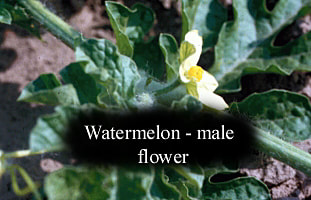
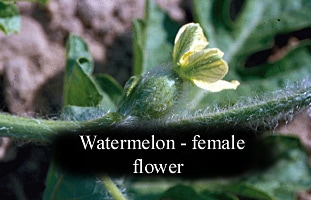
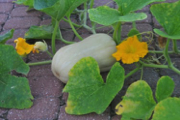
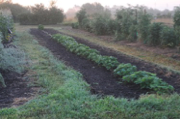
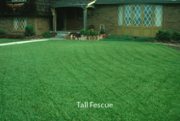
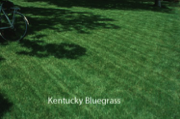
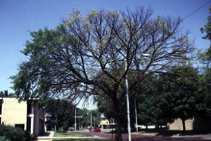
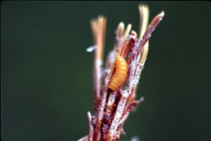
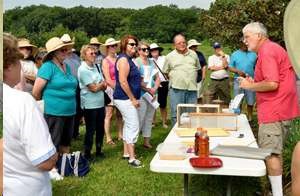
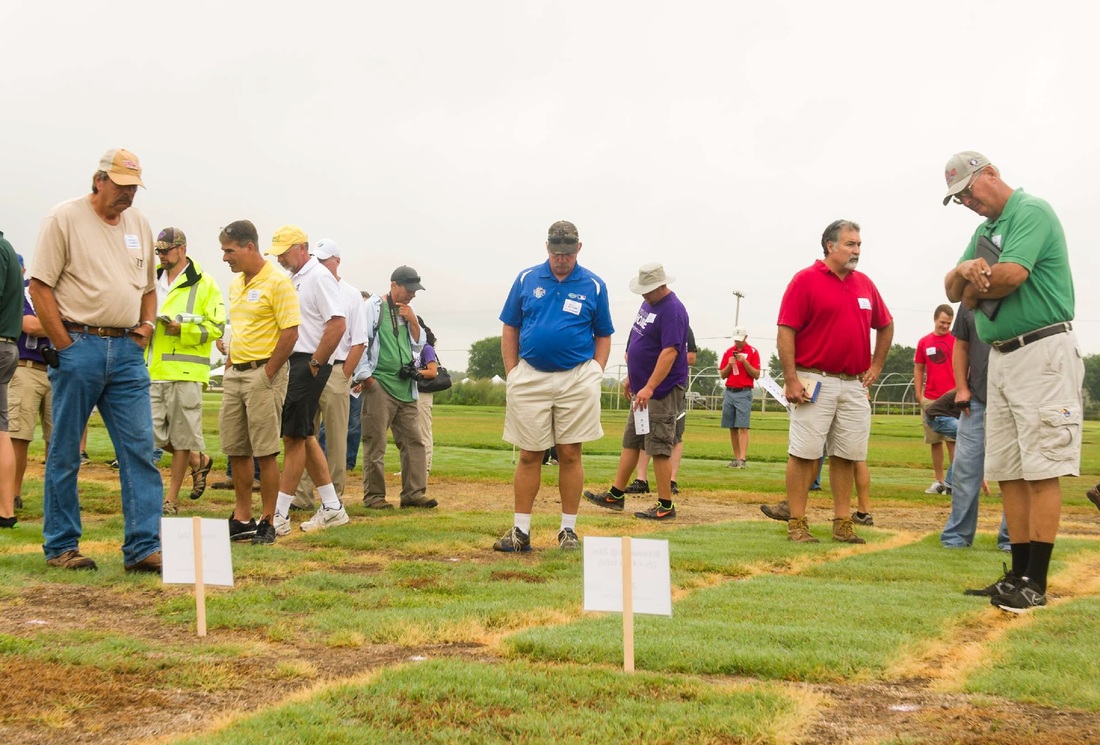
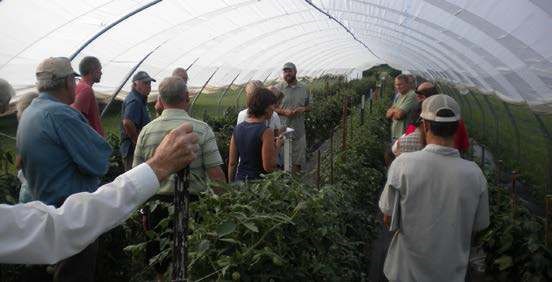
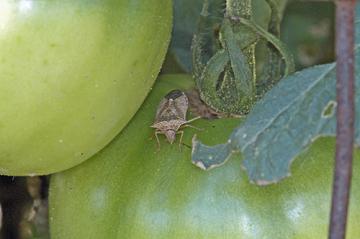
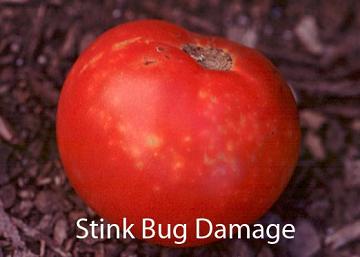
 RSS Feed
RSS Feed
